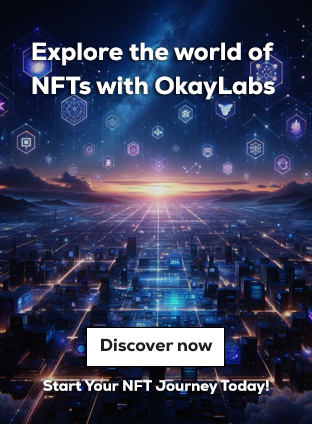Restaking is poised to revolutionize crypto investing and introduce a new asset class to the market, attracting both institutional investors and decentralized applications (dApps).
Cryptocurrency has seen massive shifts in how assets are secured and validated over the years. While staking has long been a core mechanism for securing blockchains like Ethereum, Solana, and Avalanche, restaking—a more advanced and versatile method—has now emerged as the next frontier in Web3. This new trend is expected to spark the next wave of institutional investment in the crypto space, propelling the creation of an entirely new asset class in financial markets.
What is Restaking?
At its core, staking involves locking up cryptocurrency as collateral with validators to secure a blockchain network in exchange for transaction fees. Restaking, however, takes this a step further by expanding crypto-economic security to not just the base layer of blockchain networks, but also to layer-2 scaling solutions, Web3 protocols, and even off-chain applications.
In essence, restaking platforms allow users to extend the security provided by staking to a much broader range of services across the Web3 ecosystem. EigenLayer, Symbiotic, and Karak are leading the charge, collectively managing nearly $13.5 billion in restaked assets as of mid-September 2024, according to DeFiLlama. EigenLayer is the largest player, with nearly $11 billion in total value locked (TVL).
Restaking’s Role in Web3
As Ethereum and other blockchain networks scale, securing decentralized applications (dApps) has become increasingly important. Currently, restaking platforms like EigenLayer are securing a variety of actively validated services (AVS), such as decentralized data storage, random number generation, and much more. EigenLayer, for example, is already providing security for its own protocol, EigenDA, which is focused on data storage and management, and is beginning to reward users for their participation.
The next phase of restaking will see a growing number of dApps join these platforms. For instance, ARPA Network, known for its focus on trustless random number generation, has announced plans to begin rewarding restakers by the end of September 2024. Other projects, like Lagrange State Committees and AltLayer MACH, are expected to follow suit soon.
The Two-Sided Marketplace for Security
Restaking has created what’s essentially a two-sided marketplace for crypto-economic security, according to a16z General Partner Ali Yahya. On the one side, you have dApps and protocols looking to secure their networks with additional crypto-economic backing. On the other side, you have restakers—individuals or institutions who post crypto collateral in exchange for a portion of protocol revenues.
The restaking marketplace is rich with opportunity, with at least 10 restaking protocols and dozens of collateral tokens to choose from, including Ether, wrapped Bitcoin, liquid-staking derivatives (LSDs), and even native tokens like EigenLayer’s EIGEN.
Restakers have the flexibility to either delegate tokens to a node operator (such as EigenLayer’s 1,500 node operators) or deposit into a restaking pool in exchange for liquid restaking tokens (LRTs), with a growing number of LRT protocols available.
New Investment Class: Restaking as a Market Driver
As restaking grows, it’s becoming clear that this trend is more than just an extension of traditional staking—it represents the creation of an entirely new asset class within the crypto ecosystem. Restaking allows for risk-managed investments in decentralized finance (DeFi) protocols, with investors able to balance their exposure to risk and reward by selecting specific AVSs to secure.
In a recent blog post, Byzantine Finance, a DeFi protocol specializing in restaking strategies, stated that institutional players are already beginning to embrace restaking. Nomura’s crypto arm, Laser Digital, for example, announced plans to incorporate restaking into their offerings earlier this year. S&P Global has even predicted that restaking could create an “internet bond” market, positioning it as a significant asset class for institutional investors in the future.
Restaking’s Impact on Network Performance and Revenue Models
Restaking is also driving a key change in how network performance and revenue models are structured. Unlike traditional staking, which typically rewards participants with flat yields, restaking platforms are introducing dynamic reward systems tied to specific AVS performance.
In early September 2024, EigenLayer unveiled an upgraded security model that ties restaking returns to the performance of individual AVSs. Each AVS has its own business model, with protocols establishing terms for rewards and penalties (slashing) based on their individual needs. This introduces a new layer of complexity for investors, who will need to consider risk/reward trade-offs when deciding where to deploy their restaked capital.
As Mike Silagadze, CEO of Ether.fi, pointed out, restaking is likely to evolve into a revenue model where on-chain activity drives profits. Restakers will eventually be compensated by users of AVSs who will directly or indirectly pay for the security services provided by restakers. The key will be to establish a sustainable model where the value of restaking grows in parallel with the value it brings to the broader ecosystem.
Restaking vs. Traditional Staking: A Growing Trend
The distinction between traditional staking and restaking lies in the latter’s ability to expand the value proposition for crypto investors. Restaking is not just about securing a single blockchain—it’s about creating a new layer of economic security that underpins the entire Web3 ecosystem.
The decentralized nature of restaking makes it more adaptable and less likely to be displaced by emerging security solutions like zero-knowledge (ZK) proofs. As the demand for scalable, decentralized networks grows, restaking is becoming a fundamental part of how these networks will operate.
Conclusion: The Future of Restaking
Restaking is more than just a passing trend—it’s a powerful and scalable solution to Web3’s most pressing challenges. As institutional investors increasingly see the value of participating in the restaking ecosystem, we will likely see the market for restaking mature into a thriving asset class of its own.
By extending the concept of staking to an entire ecosystem of decentralized applications, restaking is poised to reshape the crypto investment landscape, attract billions in institutional capital, and drive the growth of new business models in the Web3 space. The rise of restaking is undoubtedly one of the most significant developments in crypto, with the potential to spark the next big wave of innovation in the industry.



